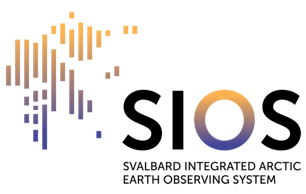Radiation budget data were collected during two hydrographic cruises in the Ligurian Sea during two different periods of year. Measurements were made from the CNR oceanographic vessel Minerva. The measurements were carried out continuously when the ship was either under way or when she was at a hydrographic station or anchored for shelter in the lee of small islands. The only rejected data were those collected in the ports. The R/V Minerva was equipped to measure the incoming irradiance (shortwave and long-wave) continuously and the sea surface temperature. Shortwave irradiance was measured using two Eppley PSP pyranometers. Long-wave irradiance was measured by two Eppley Precision Infrared Radiometers (PIR). To overcome the difficulties in making measurements of incident radiation on board, an experimental solution was ad hoc developed, based on the use of a couple of sensors for each measured term, as well as an analytical method to control the quality of the data. These four upward-looking hemispheric radiometers were mounted on the upper deck of the R/V Minerva, about 12 m above the sea level. The instrument locations were carefully selected to minimize the influence of the ship's structure on the measurements (i.e., avoiding having two sensors of the same kind simultaneously in the shadow of the ship's superstructure). The data were collected on a PC via an ADC card and recorded on the hard disk with a sampling time of 1 Hz. The sea surface temperature was measured by a Minarad RS-20. The thermometer was mounted on a boom over the bow of R/V Minerva, about 6 m above the sea level. The sea surface temperature was measured in the absence of breaking waves because in such instances the foam wetted the dome of the instrument invalidating the readings. The data were collected on a PC via an ADC card and recorded on the hard disk with a sampling time of 1 Hz. Long-wave upward radiation was computed from the sea surface temperature using the Stefan Boltzmann Law, while the reflected shortwave radiation using the Payne's table. Therefore the radiation budget was estimated. Hourly observations of the principal meteorological parameters were also carried out. An Assmann psychrometer was used to make measurements of air temperature and humidity, pressure values were obtained from the ship's barometer and the fractional cloud cover was visually estimated. All these observations were carried out from the main deck of the R/V Minerva, about 8 m above sea level. The navigation data were collected from the LORAN of the ship and recorded on a PC. The data set provides a continuous time series of 1-min average values of: solar radiation, atmospheric radiation, sea surface temperature, infrared radiation from the sea, radiation budget, latitude and longitude data. Moreover, data set of hourly values of the above parameters and air temperature, humidity, vapour pressure, atmospheric pressure are also available. .
Environmental radionuclide data. Of interest for EDMED we may mention long time-series of data on seawater and seaweed from Danish, Swedish, Faroese and Greenland waters, plutonium in sediments and biota from the Thule accident area, Chernobyl debris in Baltic, Danish and Greenland Sea samples. The marine data collection is justified by the documentation of the radioactive pollution level and by its function as tracers for the potential transport of other pollutants and water masses. The section participates regularly in international intercomparisons and quality assurance tests. Only own data. .
"Data supplement for Saunois et al. (2019), The Global Methane Budget 2000-2017, Earth System Science Data Discussion, https://doi.org/10.5194/essd-2019-128. Further information is available on: https://cdiac.ess-dive.lbl.gov/GCP/methanebudget/2016/. This file Global_Methane_Budget_2000_2017_v2.0_full.xlsx includes the following: 1. Summary. 2. CH4 observations. 3. Antropogenic emissions. 4. 2000-2009 Bottom-Up Budget. 5. 2000-2009 Top-Down budget. 6. 2008-2017 Bottom-Up budget. 7. 2008-2017 Top-Down budget. 8. 2007 Bottom-Up budget. 9. 2017 Top-Down budget. 10. Contributor list.\nChevallier, F., Le Quéré, C., Saunois, M. (2020). Data supplement of Global Methane Budget 2000-2017, GCP, https://hdl.handle.net/11676/4mKODq6pdGLSebFBueFFvkxW" .
"above canopy data. Swin: incoming solar radiation (4.7 m),Swnet: net short-wave radiation (3.8m),Lwnet: net longwave radiation (3.8m),NetRad: net radiation (3.8m),Swin: incoming short-wave radiation (3.8m),Swout: reflected SW radiation (3.8 m),Lwin: downward long-wave radiation (3.8m),Lwout: LW emitted radiation (3.8m),Pa: air pressure (1.65 m),PPFD_IN: incoming photosynthetically active radiation (3.9m),PPFD_OUT: reflected PPFD (3.9m),PPFD_DIR: direct PPFD (3.9m),PPFD_DIFF: diffuse PPFD(3.9m),Sun: sunshine duration (3.9m),T_canopy: canopy surface temperature (3.9m),Ta: air temperature (2.5m),RH: relative humidity (2.5m),P: precipitation (Geonor),D_SNOW: snow depth. Timestamp at end of the averaging interval. More information: www.icos-sweden.se" .
Time series (from March 19th 2012 to October 6th 2020) of solar radiation and photosynthetic active radiation (PAR) from data loggers located at the roof of the University Centre in Svalbard (UNIS) in Longyearbyen, Norway. Location 78o13’21’’N/15o39’9’’E, 20 m above sea level. Measurements were recorded every 10 minutes .
"above canopy data. Swin: incoming solar radiation (4.12 m),Swnet: net short-wave radiation (3.94m),Lwnet: net longwave radiation (3.94m),NetRad: net radiation (4m),Swin: incoming short-wave radiation (3.94m),Swout: reflected SW radiation (3.94 m),Lwin: downward long-wave radiation (3.94m),Lwout: LW emitted radiation (3.94m),Pa: air pressure (1.5 m),PPFD_IN: incoming photosynthetically active radiation (4.13m),PPFD_OUT: reflected PPFD (4.13m),PPFD_DIR: direct PPFD (4.27m),PPFD_DIFF: diffuse PPFD(4.27m),Sun: sunshine duration (4.27m),T_canopy: canopy surface temperature (4m),Ta: air temperature (1.8m),RH: relative humidity (1.8m),P: precipitation,D_SNOW: snow depth. Timestamp at end of the averaging interval. More information: www.icos-sweden.se\nHolst, J., Klemedtsson, L., Liljebladh, B., Mölder, M., Weslien, P. (2020). Ecosystem meteo time series (ICOS Sweden), Lanna, 2014-12-31–2015-12-31, Swedish National Network, https://hdl.handle.net/11676/3heACsy_yTzd9KVFiKCQCgvQ" .
"above canopy data. Swin: incoming solar radiation (101.5 m),Swnet: net short-wave radiation (55m),Lwnet: net longwave radiation (55m),NetRad: net radiation (55m),Swin: incoming short-wave radiation (55m),Swout: reflected SW radiation (55 m),Lwin: downward long-wave radiation (55m),Lwout: LW emitted radiation (55m),Pa: air pressure (1.5 m),PPFD_IN: incoming photosynthetically active radiation (55m),PPFD_OUT: reflected PPFD (55m),PPFD_DIR: direct PPFD (101.5m),PPFD_DIFF: diffuse PPFD(101.5m),Sun: sunshine duration (101.5m),T_canopy: canopy surface temperature (55m),Ta: air temperature (28 m),RH: relative humidity (28 m),P: precipitation,D_SNOW: snow depth. Timestamp at end of the averaging interval. More information: www.icos-sweden.se\nMölder, M., Lehner, I., Båth, A., Holst, J., Linderson, M. (2021). Ecosystem meteo time series (ICOS Sweden), Norunda, 2019-12-31–2020-12-31, Swedish National Network, https://hdl.handle.net/11676/-ZCo8w9CD5FXXJEUapFRGujo" .
"above canopy data. Swin: incoming solar radiation (101.5 m),Swnet: net short-wave radiation (55m),Lwnet: net longwave radiation (55m),NetRad: net radiation (55m),Swin: incoming short-wave radiation (55m),Swout: reflected SW radiation (55 m),Lwin: downward long-wave radiation (55m),Lwout: LW emitted radiation (55m),Pa: air pressure (1.5 m),PPFD_IN: incoming photosynthetically active radiation (55m),PPFD_OUT: reflected PPFD (55m),PPFD_DIR: direct PPFD (101.5m),PPFD_DIFF: diffuse PPFD(101.5m),Sun: sunshine duration (101.5m),T_canopy: canopy surface temperature (55m),Ta: air temperature (28 m),RH: relative humidity (28 m),P: precipitation,D_SNOW: snow depth. Timestamp at end of the averaging interval. More information: www.icos-sweden.se\nMölder, M., Lehner, I., Båth, A., Holst, J., Linderson, M. (2021). Ecosystem meteo time series (ICOS Sweden), Norunda, 2016-12-31–2017-12-31, Swedish National Network, https://hdl.handle.net/11676/CZudxXn7__od9sAhWRcdaYnG" .
"above canopy data. Swin: incoming solar radiation (4 m),Swnet: net short-wave radiation (4m),Lwnet: net longwave radiation (4m),NetRad: net radiation (4m),Swin: incoming short-wave radiation (4m),Swout: reflected SW radiation (4 m),Lwin: downward long-wave radiation (4m),Lwout: LW emitted radiation (4m),Pa: air pressure (1.5 m),PPFD_IN: incoming photosynthetically active radiation (4m),PPFD_OUT: reflected PPFD (4m),PPFD_DIR: direct PPFD (4m),PPFD_DIFF: diffuse PPFD(4m),Sun: sunshine duration (4m),T_canopy: canopy surface temperature (4m),Ta: air temperature (2m),RH: relative humidity (2m),P: precipitation,D_SNOW: snow depth. Timestamp at end of the averaging interval. More information: www.icos-sweden.se\nNilsson, M., Peichl, M., Marklund, P., De Simon, G., Löfvenius, P., Holst, J., Mölder, M., Linderson, M., Lindgren, K. (2020). Ecosystem meteo time series (ICOS Sweden), Degero, 2016-12-31–2017-12-31, Swedish National Network, https://hdl.handle.net/11676/4iWQbOWcD1A6vu7amlrIxIqG" .
 Radiation budget data for Ligurian Sea during project LIGUR (1990-91) .
Radiation budget data for Ligurian Sea during project LIGUR (1990-91) .



